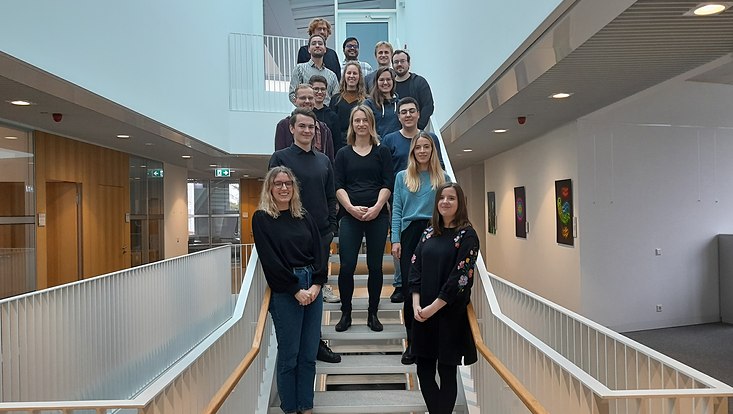Arbeitsgruppe Prof. Dr. Carmen Herrmann
Research
Our research focus is on the first-principles theory of molecular and nanoscale spintronics. Molecular and nanoscale spintronics refers to the investigation of molecules and nanostructured materials as elements of electronic circuits, exploiting their spin degree of freedom. Such nanoscale systems are interesting because of the promise they hold as miniature building blocks for applications in information processing, transfer and storage. Due to their dimensions, they may show quantum effects which cannot be exploited in macroscopic systems, and their properties may be fine-tuned via chemical synthesis. Molecular and nanoscale spintronics is also important for fundamental science, since it allows studying nanosystems under very unusual conditions.
Research topics (systems and phenomena)
- Magnetoresistance in molecular junctions, e.g. for organic radicals
- Spin-orbit effects in nanoscale electron transport, manifesting, e.g., as a circular photogalvanic effect in PbS nanosheets and as chiral induced spin selectivity in helical molecules
- Adsorbates on surfaces, e.g. Kondo systems, small molecules on CNTs, platform-mounted molecules, and their vibrational signatures
- Switchable electronic communication through molecular bridges, e.g. by photoswitching, redox-switching, radical formation or protonation of molecular bridges
- Charge delocalization in mixed-valence compounds, e.g. for selenophene and thiophene wires
Research topics (theoretical methods and concepts)
- Electronic communication through molecular bridges as a unifying concept, e.g. when comparing exchange spin coupling and molecular conductance, showing that different bridge orbital trends result in common property trends
- Local pathways and subsystem properties, e.g. local currents, exchange pathways, local dipole moments, local spins, and selective calculation of (local) vibrations
- Theoretical methods and concepts for exchange spin coupling, e.g. a Green's-function approach, stuctural diradical character, and DFT validation
- Software development for molecular spintronics, local properties, and vibrational properties

